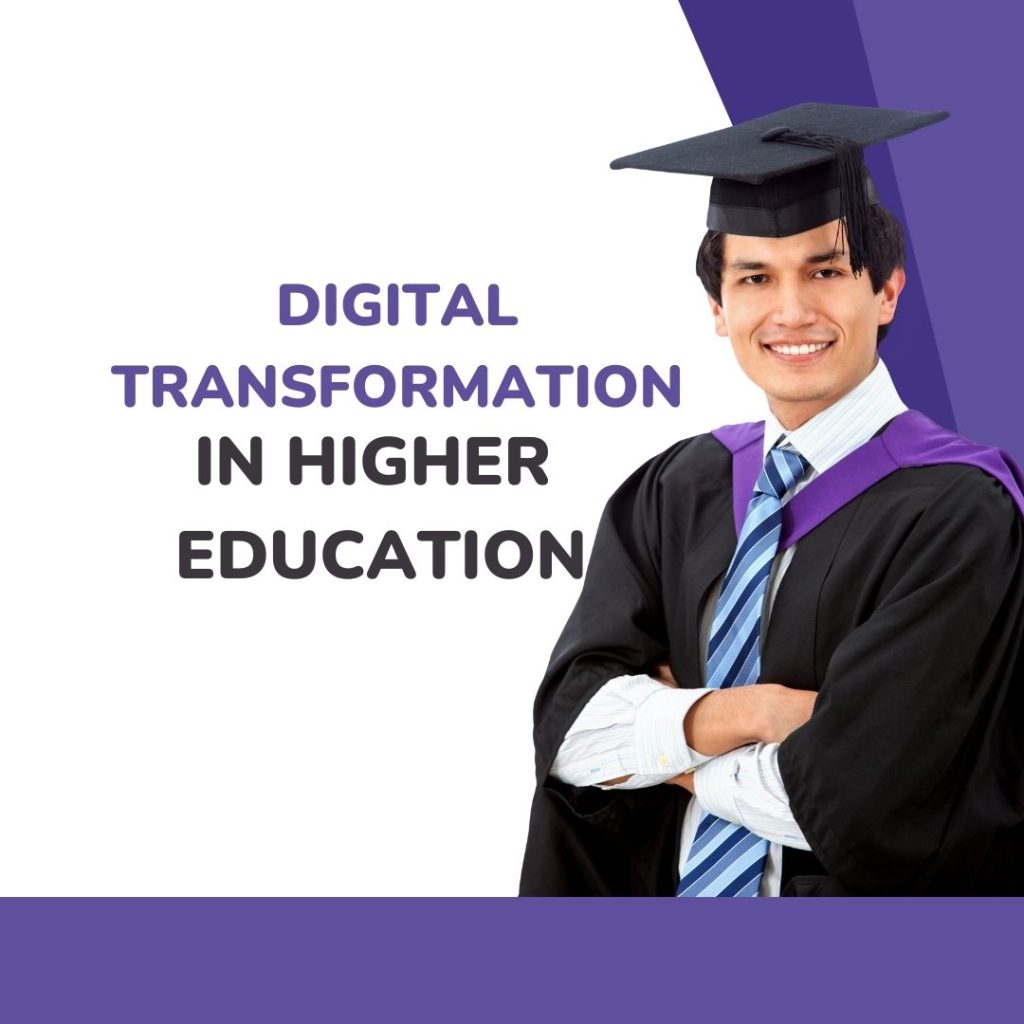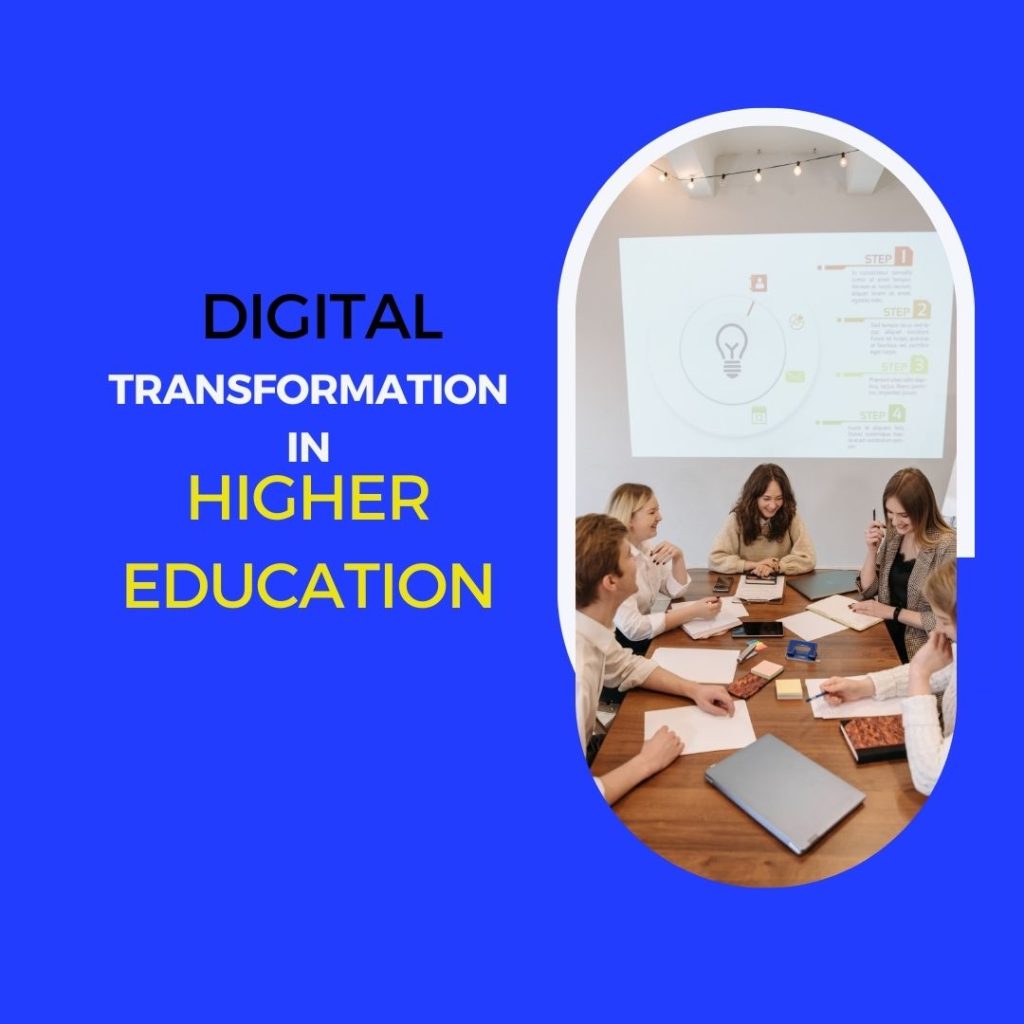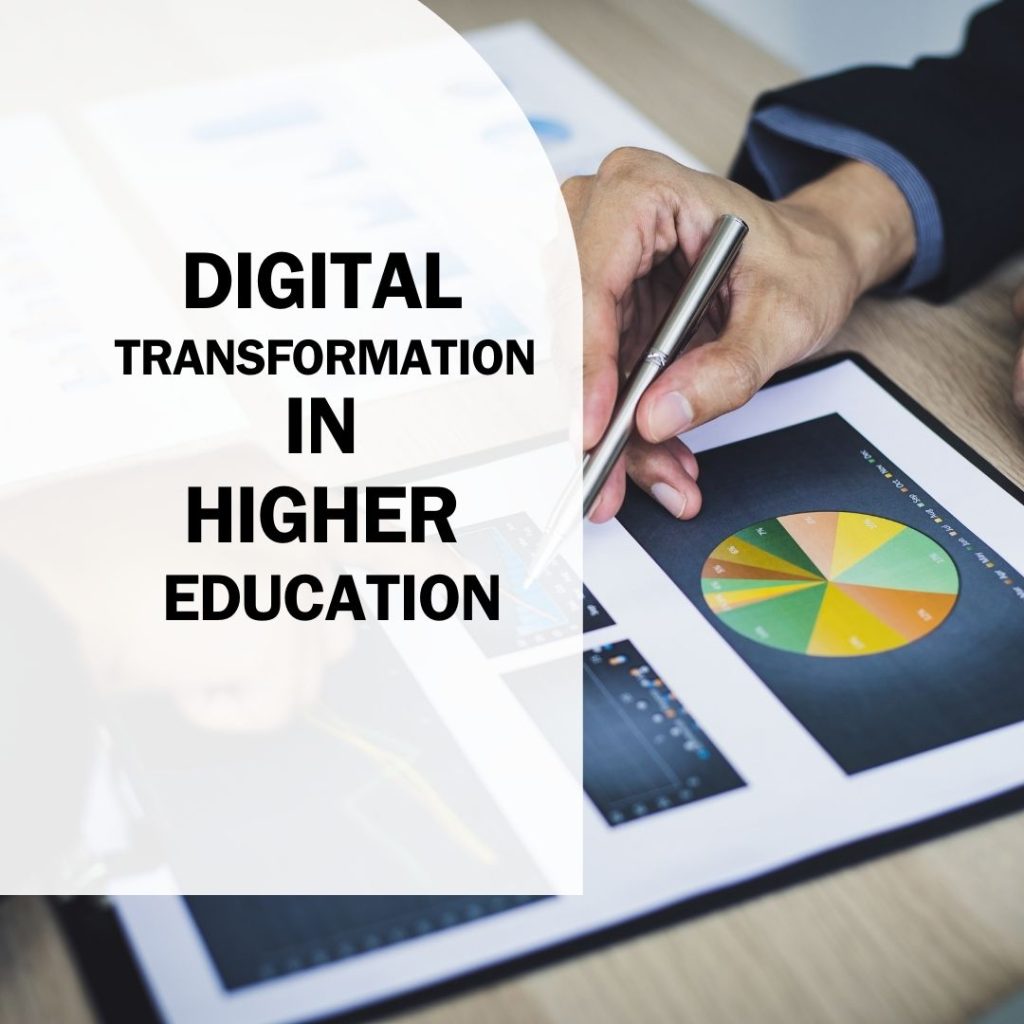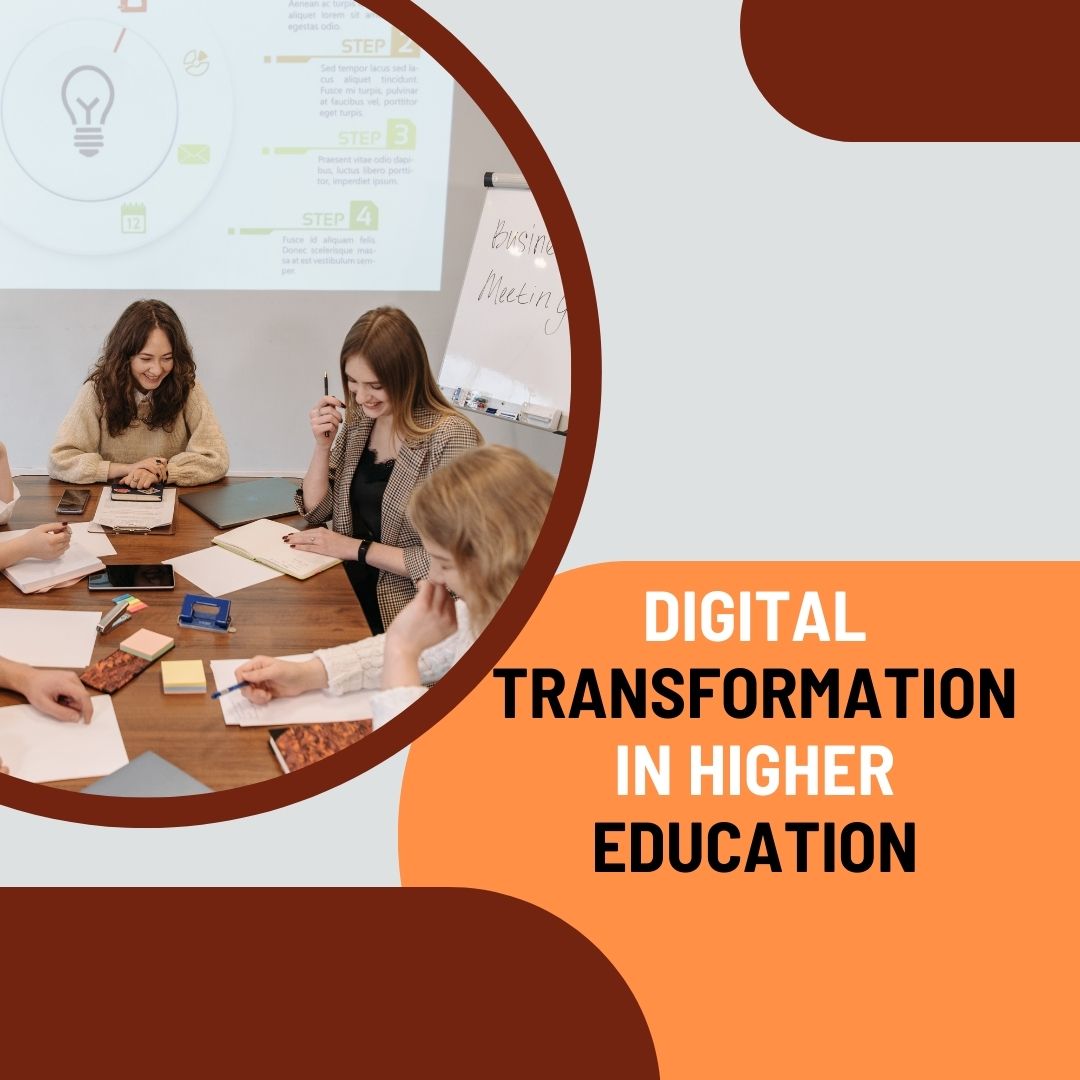Digital Transformation in Higher Education for Better Learning
Digital transformation in higher education integrates technology to enhance teaching and learning. It reshapes educational systems for improved student outcomes and operational efficiency.
The world of higher education is at a pivotal point of change, driven by digitalization. Colleges and universities globally are adopting innovative technologies to revolutionize the educational experience. This move towards digital transformation involves the integration of digital tools and platforms, facilitating online learning, improving data management, and automating administrative processes.
By embracing such technologies, institutions aim to stay relevant and address the evolving needs of a diverse student population. Digital transformation not only supports personalized learning but also fosters collaboration and research, preparing students for a technology-driven workforce. The goal is to create agile and sustainable educational environments that can swiftly adapt to future advancements in technology while maintaining academic excellence.
The Rise Of Digital Transformation In Higher Education
In recent years, higher education has seen a digital transformation revolution. With technology advancing at a breakneck pace, universities and colleges are rapidly embracing digital solutions. This shift is changing how institutions operate and deliver education to students worldwide. Let’s explore what’s driving this change and its impact on learning and teaching.
Drivers Of Change
Several factors are propelling the digital transformation in higher education:
- Technological advancements: Rapid innovation in technology offers new tools for learning.
- Global competition: Institutions must stand out in a crowded and competitive educational landscape.
- Changing student needs: Today’s students seek flexibility, convenience, and modern learning experiences.
- Research and collaboration: Digital platforms enable cross-border and interdisciplinary research efforts.
Impact On Learning And Teaching
Digital transformation touches every aspect of the educational experience:
| Area of Impact | Effects |
|---|---|
| Curriculum delivery | Interactive and personalized learning experiences are now possible. |
| Assessment methods | Digital tools offer instant feedback and diverse evaluation techniques. |
| Student engagement | Technologies like virtual classrooms and forums encourage active participation. |
| Professional development | Educators have access to ongoing training opportunities online. |

Setting The Scene For Transformation
As the digital wave sweeps across sectors, higher education stands at a pivotal brink.
Universities and colleges worldwide are gearing up for a massive shift.
This revamp is not by mere choice, but a necessity. Embracing digital transformation ensures institutions remain relevant and competitive.
Current Landscape Of Universities
Today’s universities balance tradition with innovation. They preserve scholastic heritage while integrating cutting-edge technologies. Campuses buzz with smart classrooms, online courses, and data-driven administration.
The digital era has brought a blend of on-site and virtual learning environments. This coexistence defines the current academic ecosystem.
Challenges To Overcome
- Resource Allocation: Diverting funds and talent to tech initiatives can strain budgets.
- Tech Adoption: Students and faculty must adapt to new tools for teaching and research.
- Data Security: Protecting sensitive information is vital with increased digital footprints.
- Cultural Shift: A digital mindset is crucial. Resistance may create bottlenecks.
Strategies For Effective Digital Adoption
The landscape of higher education is changing. Digital transformation is at the heart of this change. Schools must adopt new technologies to stay ahead. For successful digital adoption, strategies are key. Let’s explore how schools can effectively embrace the digital era.
Developing A Roadmap
Crafting a clear roadmap is the first step in digital adoption. This plan outlines the journey from traditional to digital systems. It ensures everyone understands the goals. It also sets realistic timelines. Here are some elements to consider:
- Define clear objectives: What does the institution want to achieve with digital adoption?
- Assessment of current capabilities: What systems are already in place? What needs upgrading?
- Resource planning: Consider budgets, personnel, and tools needed for transformation.
- Implementation phases: Break down the process into manageable steps.
- Ongoing review process: Regularly check progress against objectives.
With a roadmap, schools can navigate through change smoothly. It is a blueprint for success.
Inclusion Of Stakeholders
Success in digital adoption relies on stakeholder support. This includes students, faculty, and staff. Engaging these groups early is crucial. It fosters a culture ready for change. Here is how to include stakeholders effectively:
- Open communication channels: Use surveys, workshops, and meetings for feedback.
- Training and support: Offer resources to help stakeholders adapt to new tools.
- Showcase benefits: Demonstrate how digital transformation enhances learning and administrative tasks.
- Empower leaders: Identify champions within the community to drive the change.
This inclusive approach ensures a shared vision. It helps in overcoming resistance to change.

Technologies Shaping The Future Of Education
The realm of higher education is on the brink of a revolution, spearheaded by cutting-edge technologies. These innovations are redefining how students learn, teachers instruct, and universities operate. Below, we delve into some noteworthy advancements that are poised to shape the educational landscape in profound ways.
Learning Management Systems
Learning Management Systems (LMS) are the cornerstone of modern education. These digital platforms facilitate course administration, documentation, tracking, reporting, and delivery of educational courses and training programs.
- User-friendly interfaces make navigation effortless.
- Real-time access to materials keeps students engaged.
- Customizable settings cater to diverse learning needs.
An LMS like Canvas or Moodle empowers educators to create interactive lessons. Students partake in collaborative projects with ease, bridging distances through online forums and workshops.
Artificial Intelligence And Analytics
The fusion of Artificial Intelligence (AI) and analytics is transforming the academic ecosystem. This dynamic duo streamlines administrative operations and tailor learning experiences.
| Technology | Function | Impact |
|---|---|---|
| AI Tutors | Provide personalized assistance | Enhance comprehension |
| Data Analytics | Assess student performance | Informed decision-making |
AI algorithms can curate custom learning paths, adapting to individual student’s paces and preferences. Educators leverage analytics to monitor progress and identify learning gaps.
These advancements suggest a bright future for educational institutions, with technologies catalyzing efficient, inclusive, and engaging learning environments.
The Human Element In Digital Change
The Human Element in Digital Change often gets overshadowed by technology’s dazzle, yet it forms the backbone of its success. Shifting the focus to people’s roles reveals how they adapt, engage, and evolve with digital tools at their fingertips. Higher education is a vibrant blend of tradition and innovation, now standing at a crossroads where digital transformation becomes as crucial as the human touch it requires.
Faculty Development
Faculty members serve as the stewards of learning in this digital voyage. Their growth speaks volumes about a university’s commitment to future-readiness. With ongoing support for digital competencies, teaching professionals can harness technology to enhance their pedagogy, making them indispensable allies in this movement.
- Digital Training Workshops help faculty acclimatize to new tools.
- Collaborative Platforms encourage sharing best practices.
- Mentorship Programs pair seasoned and new educators.
Student-centric Approaches
Digital transformation must pivot around student experiences. Tailored tech solutions empower learners, crafting paths steeped in interactive and personalized learning.
| Technology | Impact on Students |
|---|---|
| Learning Management Systems | Streamline course access and materials. |
| AI Tutors | Provide round-the-clock academic support. |
| Virtual Reality | Enable immersive educational experiences. |
With these advanced tools, learners garner skills critical for tomorrow’s challenges.

Case Studies: Successes And Lessons Learned
Embracing digital transformation in higher education is not just about adopting new technologies. It’s about rethinking the entire educational experience. Through diverse case studies, we’ve seen institutions unveil transformative strategies. They lead to noteworthy successes and insightful lessons. Let’s delve into the experiences of pioneering institutions that have set the benchmarks for others.
Institutions Leading The Way
Innovative universities pave the path for digital transformation. They showcase robust examples for others to follow:
- MIT’s OpenCourseWare offers free course materials online, setting the open access education trend.
- Georgia Tech’s Online Master’s Degree in Computer Science demonstrates scalability in digital learning.
These case studies reveal a trend towards openness, accessibility, and flexibility in higher education.
Adaptation And Resilience
Successes in digital transformation stem from an institution’s ability to adapt and show resilience. Key takeaways include:
| Institution | Challenge | Solution |
|---|---|---|
| University of Washington | Rapid shift to virtual learning | Intensive faculty training programs |
| Arizona State University | Personalizing student learning experiences | Adaptive learning technologies |
This resilience has helped institutions maintain continuity and deliver personalized education, even during crises.
Balancing Tradition And Innovation
The digital age is revolutionizing educational landscapes. Higher education institutions often stand at the crossroads of tradition and innovation. These establishments carry the torch of academic heritage, yet with the advent of new technologies, they are thrust into the fast-paced world of digital transformation. Striking a balance is crucial; institutions must evolve without losing the core values that define them.
Maintaining Academic Integrity
Academic integrity remains the cornerstone of education. As schools embrace digital tools, the commitment to upholding these values must remain steadfast. With systems like online proctoring and plagiarism detection software, schools can preserve the trustworthiness of their degrees, a standard that has been cherished for centuries.
- Implementing strict online exam protocols
- Using reliable plagiarism software
- Training faculty and students on digital ethics
Embracing Change While Respecting Heritage
Institutions must move forward without forgetting their past. Technologies such as learning management systems (LMS) or massive open online courses (MOOCs) offer modern educational experiences but should align with the historical teaching philosophy. An appreciation for heritage complements the drive towards a contemporary education.
| Traditional Element | Innovation |
|---|---|
| Classroom Learning | Virtual Classrooms |
| Textbooks | E-books and Online Libraries |
| Face-to-Face Interaction | Web Conferencing Tools |
Looking Ahead: The Evolving Role Of Digital Education
As the sun rises on a new era, digital learning stands tall in higher education. Like a tree reaching higher, the educational field stretches into digital skies. Its branches of innovation promise fruits of knowledge for eager minds. Let’s delve into what the crystal ball of tech reveals for the classrooms of the future.
Predictions For The Next Decade
The next ten years teem with promise. Classrooms will transform into dynamic digital hubs. Teachers will evolve into guides in a cyber jungle of information. Here are some key predictions:
- Virtual Reality (VR) will take students on immersive learning adventures.
- Artificial Intelligence (AI) will tailor lessons to student needs.
- Cloud platforms will allow anytime, anywhere learning.
- Data Analytics will refine courses for better outcomes.
Continuous Improvement And Sustainability
Digital education is a journey, not a destination. Continuous improvement guides its steps. As it walks, it also cares for our planet. Here’s what sustainability in digital learning looks like:
- Less paper use, more digital texts.
- Energy-efficient tech in classrooms.
- Programs aimed at lifelong learning and skills renewal.
- Better access to education for all, making the world fairer.
| Year | Goal |
|---|---|
| 2025 | Integration of AI Assistants |
| 2030 | Complete Cloud Migration |
| 2035 | Global Digital Learning Platforms |
With each step forward, the digital path in education becomes clearer. Young minds will continue to find new ways to interact with knowledge. Digital learning is here to stay and grow.
Frequently Asked Questions Of Digital Transformation In Higher Education
What Is Digital Transformation In Education?
Digital transformation in education encompasses the integration of technology into teaching, learning, and administrative processes. It modernizes educational systems, enhances learning experiences, and prepares institutions for a technology-driven future.
How Does Technology Impact Higher Education?
Technology in higher education improves accessibility to resources, facilitates remote learning, and offers personalized educational pathways. It streamlines administrative tasks and fosters collaborative learning environments, significantly impacting academic success.
Can Digital Transformation Enhance Learning Outcomes?
Yes, digital transformation can enhance learning outcomes by providing interactive and adaptive tools that cater to individual learning styles. It also enables data-driven insights that help educators tailor their instruction for better student engagement and comprehension.
What Are Digital Transformation Strategies For Universities?
Digital transformation strategies for universities involve implementing e-learning platforms, utilizing data analytics for decision-making, and upgrading campus infrastructure with IoT devices. It also includes training faculty and staff to effectively use these new tools.
Conclusion
Digital transformation is reshaping higher education, forging pathways for enhanced learning experiences and operational efficiency. As universities embrace this evolution, they unlock potential for greater student engagement and success. Embracing tech advancements remains crucial for educational leaders aiming to stay relevant in a rapidly changing world.
Let’s prepare for a future where learning knows no bounds.







